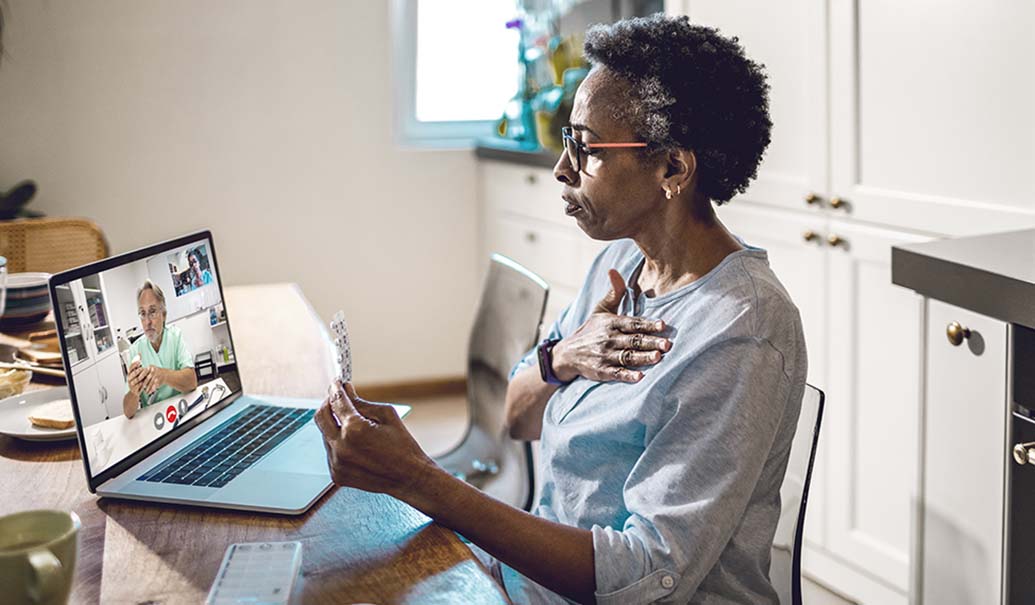Considered one of the most promising segments of digital health, digital therapeutics (DTx) has seen significant funding in recent years. While progress has been made in terms of clinical validation, regulatory clarity and reimbursement, DTx innovators are now taking on the ”last mile” challenge: bringing digital therapeutics into the hands of patients at scale.
Central to DTx adoption is the clinician, given the role they play in prescribing and influencing uptake and optimizing a patient’s care while on a DTx. Even when a prescription is not required by regulation, research has shown higher patient uptake and adherence when a clinician is in the loop. But what will it take to convince clinicians to adopt DTx? What are the motivators and barriers for use, and what are clinicians’ requirements for adoption?
These are the questions we sought to explore through primary research with general practitioners (GPs) and specialists across a number of European markets with a growing focus on digital health: Germany, Belgium, Sweden and the U.K. In this article, part of a three-part series, we unpack the top drivers of clinician adoption (see figure), where they see DTx adding value and, in turn, what minimum bar would need to be met for clinicians to adopt.
Improving patient outcomes and experience
Unsurprisingly, the top stated motivator for clinicians recommending digital therapeutics is improved patient outcomes and experience. Clinicians know behavioral change and self-management can improve patients’ overall experience as well as improve outcomes. They see potential for DTx to empower patients to achieve just that.
“Digital therapies can help with disease management and nudge the patient to take certain actions which are clinically beneficial.”
Anonymous GP, Belgium
In addition, clinicians appreciate the potential of DTx to generate additional data points and unique insights, providing them with a more-comprehensive picture of the patient that helps improve the quality of care.
Implications for DTx innovators
“Digital therapeutics” is still a very new term to the vast majority of the medical community. But concepts such as behavioral change and self-management are not. In educating healthcare professionals on the mechanism of action and benefits of your solution, build on these concepts and use familiar language.
Like other modalities in healthcare, clinicians will expect to see robust evidence. In addition to evidence showing impact on patient outcomes, generating evidence to illustrate improved patient engagement and self-management will also contribute to achieving clinician buy-in.
Widening access: The 'one-to-many' model of care
We live in an aging global population. And as the demand for healthcare continues to rise, healthcare systems around the world will need to evolve. While not the panacea to this issue, DTx is increasingly being considered as a modality that can widen access to care. Clinicians recognize the potential of DTx to help overcome capacity, timing or location constraints that limit healthcare delivery.
“Sometimes there are very long waiting times after discharge to first appointment. Bridging this gap would have huge value.”
Anonymous psychiatrist, Germany
In the mental health space, for example, clinicians highlight the potential of DTx to help even out differences in the way care is accessed across different demographics and geographies. This is particularly important when considering specialist access in rural areas, or patients who may have difficulties commuting. Consumer research by ORCHA also found that younger people and women with children at home appreciated the discretion and flexibility of DTx treatment.
Implications for DTx innovators
To broaden access to care and reach patients where they are, consider leveraging digital front doors through telehealth channels.
For example, Doc Morris Obesity Care is a digital hub in Germany that provides integrated care for people living with obesity. Patients are directed from the Doc Morris digital hub to HCPs through Teleclinic, Germany’s largest telehealth provider, who in turn can prescribe digital therapies in obesity care and mental health.
Increasing provider efficiency
Clinicians and the health systems they operate in are under constant time and capacity pressure. DTx solutions that have potential to improve provider efficiency have strong appeal. DTx with a remote monitoring component, for example, may help hospitals and clinicians focus time and resources on patients who need it most. By reviewing patients virtually, care teams can triage appropriately: some patients may need to be seen urgently while others can be referred out.
Implications for DTx innovators
Clinicians often see time poverty as a barrier to DTx adoption. They are stretched, so having additional activities associated with using a DTx (e.g., patient onboarding, queries and review of data) added to their workload can be seen as extra burden. In addition to generating evidence on clinical outcomes, evidence that shows positive impact on provider efficiency and healthcare resource utilization is important to gain buy-in from clinicians and hospital management.
To reduce burden on practices, DTx innovators can take ownership of the onboarding process and be the first point of call for patient queries and support.
The minimum bar for DTx adoption
Clinicians see potential of DTx to improve patient outcomes, access to care and provider efficiency. In addition to evidence showing positive impact on patient outcomes, clinicians will also want to know:
- Is it convenient to use and will it fit into their workflow?
- Is data privacy and security assured?
- How will it affect practice revenues and will they be reimbursed for time spent?
- Are activities covered under professional indemnity? Will they be liable?
While broad awareness of DTx among HCPs is still low, the trick with any new tech is to the find the market segment that is willing to adopt.
This article is the third of a three-part series exploring drivers and barriers of clinician adoption of DTx in Europe. Our first article focused on ways to increase clinician awareness of DTx. Our second article focused on solving technological barriers to DTx adoption.
The findings of this internally commissioned study are based on qualitative interviews conducted with 29 GPs and psychiatrists from Germany (n=8), Sweden (n=8), UK (n=7) and Belgium (n=6).
Add insights to your inbox
We’ll send you content you’ll want to read – and put to use.















